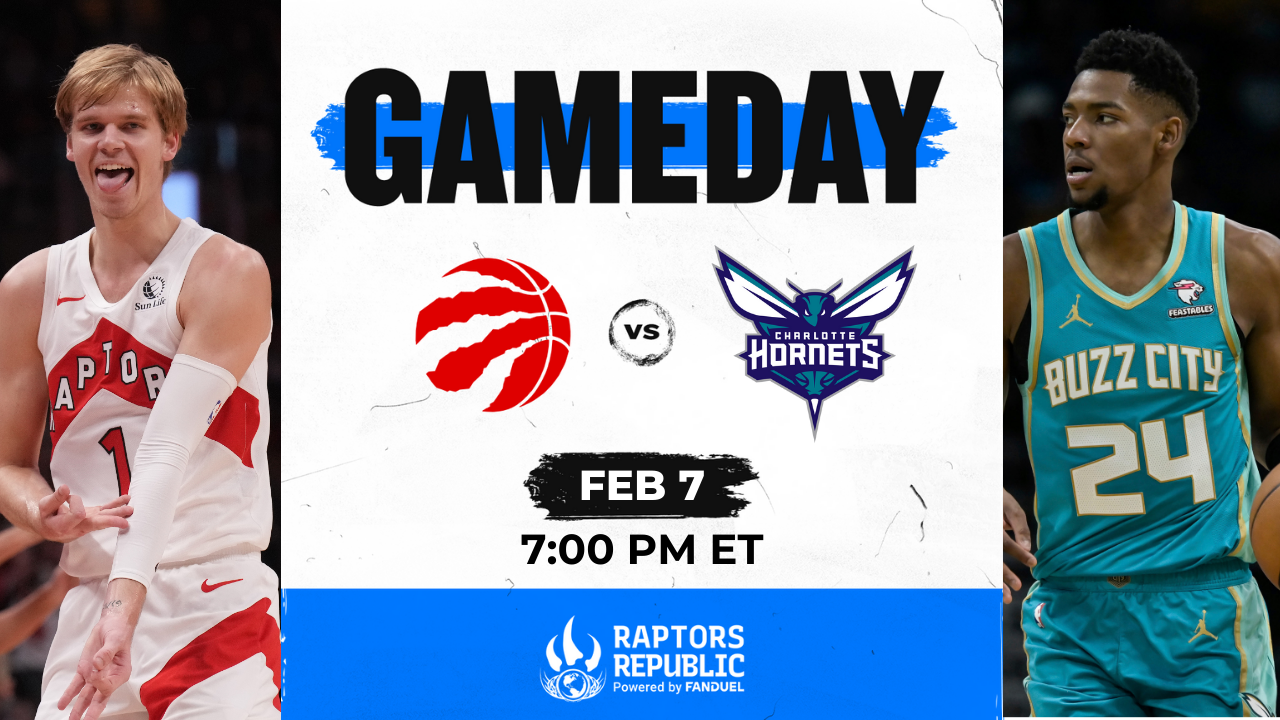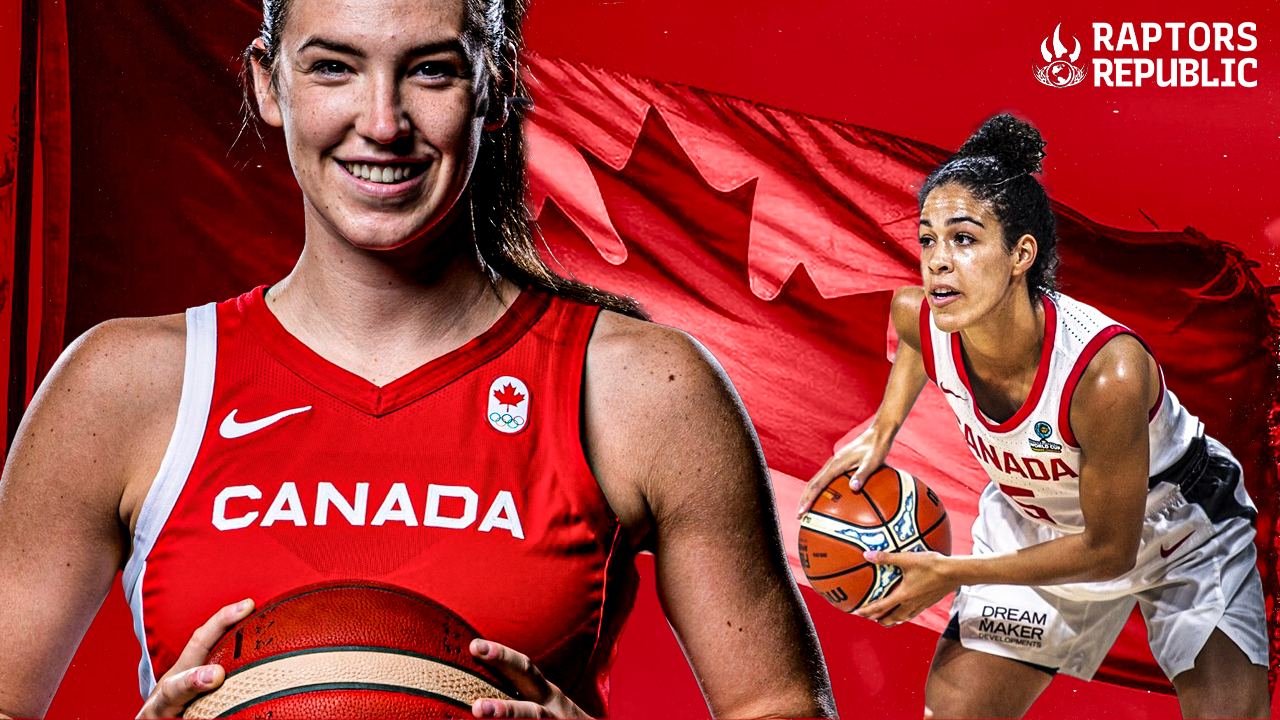When the Toronto Raptors and the New York Knicks looked at Immanuel Quickley, they saw very different things. The Knicks saw a sparkplug shooting guard, a jitterbug cutter and flamethrowing shooter who could enter the game off the bench and score in flurries. Passing was hardly part of the picture; he averaged 2.5 assists per game with New York this season. The Raptors saw the same player and envisioned a point guard.
Beauty and basketball are both in the eye of the beholder.
And since joining Toronto, Quickley has been averaging 6.4 assists per game, including hitting double digits in three of his last five games. He has as many games with double-digit assists in 15 games in Toronto as he had in his entire career in New York — 253 games.
What has led to such an increase? Which team was correct in its evaluation of Quickley? And what else has changed in his game?
It’s perhaps most important to note right off the bat this is is not just added opportunity. Yes, Quickley is averaging about 8 more minutes per game in Toronto. But he’s running almost precisely the same number of picks per 100 possessions. And within each individual pick, his frequencies have changed. He is shooting less and passing more, and a higher share of those passes are leading to assists. As a result, his assists per pick have have skyrocketed from 14 percent in New York this year to 23 percent in Toronto. That latter number would be a top-10 mark over the full season, below Fred VanVleet but above Tyrese Haliburton.
He already has more than double the assists coming out of the pick and roll in Toronto this year than he had in New York. And he’s doing it in all sorts of ways: driving out of the pick and roll to engage the big before finding his roller, hitting the roller early when he sees both defenders stepping high above the pick, using rejects and snakes to create wider lanes. He loves a weak-hand pocket pass, which is the mark of a surefire killer pull-up shooter (right-handed shooters are more dangerous dribbling with their left, so it’s best for that to be your better live-dribble passing hand, too).
He still misses some passes available to him. Most of his assists out of the pick and roll have come to his roller, and he still hasn’t mastered the skip pass to the corner after or as the tagger is sinking low to take away the roller. He has a few skip passes to his name in Toronto, but they’re mostly coming from outside of the arc, before he engages the complexity of the entire defense.
Skip passes from within the arc is another skill to add, the ability to use a pick, drive, take a gap dribble, and maintain the wherewithal to fire a skip pass by reading the orbital shell of the defense. He has the accuracy, length, and strength — just look at those miracles when he’s getting blitzed. But he just needs to rep out adding skip passes during another situation.
And furthermore, he’s not creating some other passes that would be available to other players. His finishing is such that players are staying at home on his drives, not opening up lanes to shooters. (More on his finishing in a moment.) He isn’t mixing up his speeds on drives (although he has more since returning from injury), and he doesn’t commit to putting his defender in jail. He does veer on some drives, but not to the extent that he fully blocks defenders’ abilities to recover in time. All of that means passing windows are tighter than they otherwise should be.
Still, the passing has been very good. Perhaps not at the elite level for pick-and-roll orchestrators, but very good nonetheless. It was not at this level in New York. He also didn’t have screeners like Jakob Poeltl in the Big Apple. Furthermore, Quickley is better at finding ground-bound finishers a step away from the rim and letting them stride into the finish, like Poeltl or Thad Young, than he is finding finishers above the rim, like Mitchell Robinson. So his passing is better, and the context around him is more beneficial.
Quickley’s chemistry with multiple players is burgeoning. Poeltl buys him so much space as a screener, whether on or off ball, and Quickley uses that space to great effect. He drives into wide lanes, passes through large windows. More than a third of picks Poeltl sets for Quickley result in Quickley assists, which is preposterous, and is second in the league among pick-and-roll duos. Poeltl sets heavier screens than anyone in New York, and Quickley has used great craft to ensure Poeltl’s screens actually hit. Whether that means half spins before returning to the same side, jab steps to set up flips, or more, Quickley and Poeltl have both been great at making sure the guard always has space jetting out of the pick.
And Quickley has been even more effective with Scottie Barnes screening for him, albeit less so as a passer. Against the Oklahoma City Thunder, four picks with Barnes screening for Quickley resulted in seven points. (I have no earthly idea why they ran only four, with zero in the fourth quarter or overtime.) Against the New Orleans Pelicans the next night they only ran another small handful again, but nothing was working, so no need to dive into the numbers there.
That caveat from the Thunder game — more effective picks with Quickley screening, but less so as a passer — cuts to the heart of a tension informing so much of Quickley’s transition to becoming a floor general. While the passing has been much improved, he is not doing as well finding his own offense at the same time. His 3-point shooting remains stellar in Toronto, but he’s not getting up nearly enough for being the team’s best shooter. Compare him across the league: He’s 71st in 3-point attempts per possession since Jan. 1, getting up fewer than 0.1 per possession, which is just not enough. With his fast trigger and abilities to shoot coming off screens or create his own triples, he should be near the league lead in attempt frequency. Lead guards shoot the basketball in today’s NBA. That’s unselfishness. A pass-first guard who doesn’t look to score is a relic of the past.
Furthermore, Quickley’s game inside the arc has not translated to Toronto. While he’s driving at the same rate as he did in New York, those drives are yielding almost 0.1 fewer points per, which is gargantuan. (And it’s that much less effective despite his assist rate on drives doubling in Toronto.) His drives are cut off too easily, and instead of rerouting his drives, he too often picks up his dribble. As a result, he doesn’t create easy shots for himself inside the arc, and he’s just not shooting very effectively on the ones he does take. He went from the 85th percentile as a short-midrange scorer in New York to the 30th in Toronto, losing 15 percentage points on his accuracy. The floaters and push shots aren’t falling. And that’s really where his juice inside the arc comes from; if he doesn’t hit his floaters, he’s not a dangerous 2-point scorer. He had better spacing surrounding his drives in New York than Toronto, and that seems to be affecting him greatly.
Those driving skills may not seem like point-guard abilities, but they catalyze the passing lanes, crank them open. For every floater Quickley hits, he is better able to put his own defender in jail the next time because he’ll be trying to contest harder from behind; he engages the help defender better, which opens laydown passes to Quickley’s teammates in the dunker spots. Making floaters opens passing opportunities. And if all else fails and those passing lanes don’t arise, he needs to be cook a switched big and finish — this, too, is a requirement for modern guard play.
Quickley remains perhaps more effective as a jitterbug off-ball guard than a point guard. For example, though both variations have been great, the Raptors have been more effective with Quickley screening for Barnes than with Barnes screening for Quickely. But that’s a good thing, not a bad thing. The Raptors didn’t want a ball-dominant, run-every-possession, dribble-the-ball-forever point guard, not with Barnes already on the roster. Those skills won’t meld together. They needed someone who can succeed in a variety of ways, and Quickley projects to be just that.
That’s what a successful starting lead guard looks like on a high-end team. There are non-negotiables: pull-up shooting, creation for others, and some driving and rim pressure. Off-ball play helps, both shooting, cutting, and screening, and defense really helps. Think Jamal Murray, or Steph Curry, or Jrue Holiday, or LeBron James (they were starting Kentavious Caldwell-Pope in the Finals, so I don’t know who to name here), or Kyle Lowry, who were the starting lead guards for the last five champions. If the above skills are the five boxes for high-end guard play, all of those players check at least four, most all five.
For Quickly, the pull-up shooting is stellar, and the creation for others is on its way. The other non-negotiable, the inside-the-arc self-creation and finishing, that has taken steps back in Toronto. That will need to improve. The off-ball play is fantastic, and the defense has been relatively solid. But the visualization of the type of guard on a championship team is there. He’s not there yet, but you can see him getting there. With skip passing, more dribble craft, more 3-point attempts, more determined driving, and better floater finishing (whew, that’s a mouthful), we’re looking at a messianic point guard.
Envisioning that wasn’t really possible in New York. And much of the reason it is now is because of the passing evolution. Quickley is slowly starting to look like a point guard. Toronto’s season in terms of competitiveness may be circling the drain, with losses mounting, but there are small victories everywhere you look. And very few of them are more meaningful than Toronto being correct, at least so far, that Quickley can play point guard.



